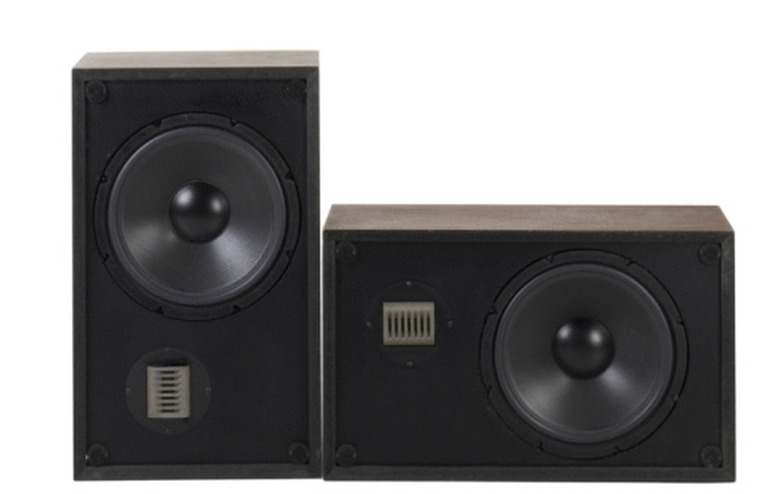How To Convert Decibel Increase To Percent
Most people hear a fantastic range of sounds every day. Some of these sounds people direct to their ears by choice (e.g., music, the voice at the other end of a phone call), while others find their way into your auditory processing centers as a result of you simply being in the world in some way. Some sounds are bothersome, and you're likely to think of these as noise, as they're either too grating, high-pitched, plain loud or otherwise unpleasant to listen to.
Moreover, if you have been near an especially loud source of sound, like an amplifier or speaker at a rock concert, you understand at a certain volume level that sound isn't so much sound as energy, with the bass parts of songs sufficient to cause your whole body to sense them. In fact, this is the case, and the decibel (dB) is the unit.
Have you ever wondered how much of a sound-energy range you experience throughout your life? That is, when you turn the stereo volume up to its maximum value of 10, is this "five times as loud" as when the volume is set to 2? Is there a simple percent to dB conversion? As it happens, it works a little differently than this.
What is a Decibel in Physics?
What is a Decibel in Physics?
Sound travels in the form of waves, just as electromagnetic waves (e.g., visible light, microwaves) do. Sound waves, unlike EM waves, need a physical medium such as air or water in which to propagate; a physical vacuum such as outer space is noiseless, despite what the makers of the Star Wars films would have you believe.
The decibel (dB) is a measure of intensity and is usually measured in watts per square meter **(W/m2)**. The decibel thus describes how much sound-wave power moves through a two-dimensional slice of space at any time.
The equation relating the increase in the sound level in decibels to the increase in intensity I from some initial reference intensity I0 is
\(\text{SL(dB)} = 10 \log \bigg(\frac{I}{I_0}\bigg)\)
- Note that (I/I0) is unitless, meaning that you don't have to use W/m2.
Working With Logarithms
Working With Logarithms
A logarithm is an exponent, the number to which the base (10 unless specified otherwise) must be raised to equal the argument of the log. For example, log10(100) is the exponent to which 10 must be raised to get 100, which is 2. Your calculator has a log function to handle problems like these.
Therefore, if you started with a sound intensity of 5 (in any units) and raised it to 50, the resulting change in decibel level would be 10 log(50/5) = 10 log(10) = 10(1) = 10.
Biophysics of the Decibel Scale
Biophysics of the Decibel Scale
What if, instead of wanting to compare the intensities of two easily audible sounds, you wanted to set I0 to a zero reference point so that the result would be an absolute number of decibels? As it happens, the lower limit of human hearing is about 1 × 10 −12 W/m2. This number is used when a fixed value of I is sought.
How to Convert dB to Percentage Increase
How to Convert dB to Percentage Increase
If the sound level of a piece of heavy machinery rises by 3 dB, what is the percentage increase?
Refer to the equation SL(dB) = 10 log (I/I0) and solve for the argument (the quantity in parentheses I/I0):
\(\begin{aligned}
3 &= 10 \log \bigg(\frac{I}{I_0}\bigg) \
0.3 &= \log \bigg(\frac{I}{I_0}\bigg) \
10^{0.3} &= \frac{I}{I_0} \
&= 1.995
\end{aligned}\)
The intensity is therefore 1.995 times as great, and the percentile difference is obtained by setting I0 = 1, so that the percent change is given by 100 × (1.995 – 1.0) = 99.5 percent.
Thus you can see that the decibel scale varies only slightly with intensity level, or put another way, intensity levels vary far more widely in nature than the decibel scale reveals, simply to make the decibel scale easier to work with. If you want to do more complicated calculations, the Sengpiel decibel and percent calculator incorporates things like total harmonic distortion for a more detailed analysis (see Resources).
Cite This Article
MLA
Beck, Kevin. "How To Convert Decibel Increase To Percent" sciencing.com, https://www.sciencing.com/convert-decibel-increase-percent-8208377/. 22 July 2020.
APA
Beck, Kevin. (2020, July 22). How To Convert Decibel Increase To Percent. sciencing.com. Retrieved from https://www.sciencing.com/convert-decibel-increase-percent-8208377/
Chicago
Beck, Kevin. How To Convert Decibel Increase To Percent last modified March 24, 2022. https://www.sciencing.com/convert-decibel-increase-percent-8208377/
